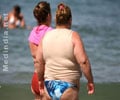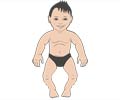Criteria in Childhood Obesity
There are various ways (tests) of defining a child as overweight or obese. A child's body undergoes various physiological changes at different ages and thereby there is often difficulty in knowing the extent of obesity.
Standards have been set by WHO (Depending on the age, WHO gives different ways to measure a body's healthy weight) and Centers of Disease Control and Prevention.
Various methods used in determining obesity criteria in children are:
Weight to height tables – This is a very basic way of knowing the child’s weight status. Indian Council of Medical Research gives general ranges for healthy weight for a child's height. However, the child’s age and growth pattern also has to be considered. Generally a child is considered obese if the weight is 20 percent or more over what is recommended as healthy range for the height and body type.
Body fat percentage – Adolescent boys with more than 25 percent fat and girls with more than 31 percent fat are considered obese. The disadvantages of this method are that proper equipments to measure the same are not available at most medical centers and skin fold thickness measurement can go wrong if not measured with care and accuracy.
Body mass index – This measure is used to assess weight relative to height. Most of the studies use BMI as a measure of obesity in children. The Centers of Disease Control and Prevention suggests two levels of concern for children based on the BMI-for-age charts.
A child with a BMI at or above 85th percentile for age and sex is considered at risk of being overweight and at or above 95th percentile for age and sex is considered obese.
The American Obesity Association defines those children above the 95th percentile as "obese", which corresponds to a BMI of 30 (considered obese in adults).
To calculate a child's body mass index, steps below are to be followed:
- Multiply the child's weight in pounds by 705.
- Then divide the product by the child's height in inches.
- Divide the result by the height in inches again.
Age group is a variable, so one has to take that into account as well as other factors and multiple methods.





















